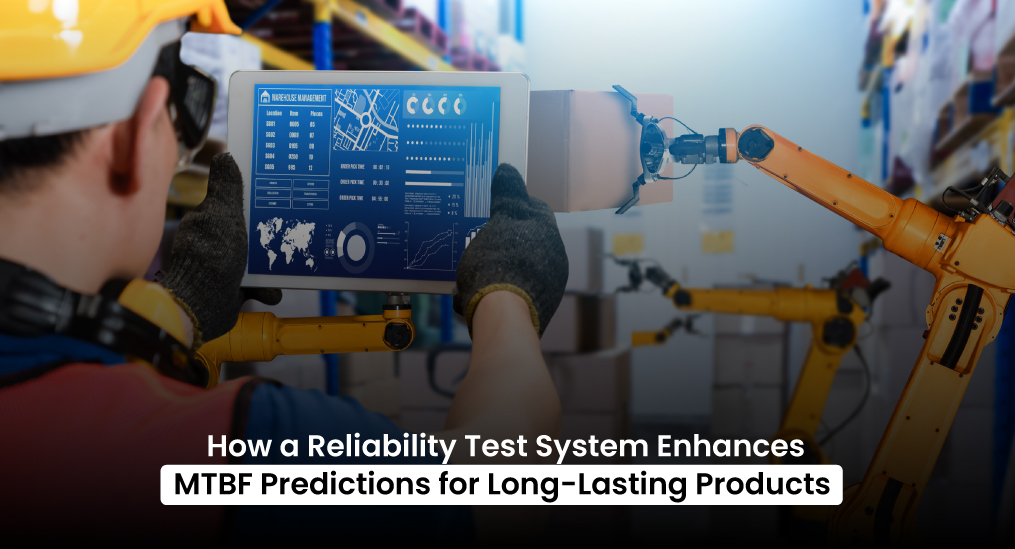How Reliability Testing in IoT Device Development Ensures Performance
The Internet of Things (IoT) transforms how we link billions of devices across industries, homes, and cities. IoT devices are now a key part of our daily lives, from smart thermostats in our homes to large-scale industrial sensors in factories. With their growing role, one key question arises: How can we ensure these devices operate smoothly, no matter the situation? The answer is found in IoT device reliability testing.
Reliability testing is vital in developing IoT devices and is crucial for overall performance and long-term functionality. Without this technology, devices could be at risk of failures, security breaches, and obsolescence in a changing tech environment. Let’s investigate how this testing assists in achieving smooth operation and future-proofing.
What is IoT Device Reliability Testing?
It is a framework of IoT quality assurance that assesses how devices respond under different conditions over time. IoT testing recreates scenarios of extreme temperatures, power fluctuations, network instability, or heavy loads to ensure the devices can resist wear and tear.
Reliability is crucial in the IoT environment, where devices frequently operate in remote and unsupervised locations. In other words, usability testing ensures that devices work with minimal downtime, even under tough conditions, and successfully carry out their purpose.
Ensuring Seamless Performance Through Stress Testing
Seamless performance in IoT devices translates to uninterrupted functionality, regardless of stressors. Stress testing drives IoT devices to their limits, guaranteeing they operate efficiently even as conditions deteriorate.
Consider an industrial IoT sensor that oversees machinery in a factory. The sensor must continue sending precise data if the temperature or humidity increases. Stress tests ensure that sensors, actuators, and gateways can manage such circumstances without failure, maintaining real-time monitoring and alert functions.
By discerning how much load a device can endure before failing, developers can optimize their designs for better performance under stress, thus minimizing the chance of device failure in real-world applications.
Improving Durability with Environmental Testing

IoT devices are installed in different settings, from cold outdoor to hot industrial settings. Environmental testing ensures the durability of these devices by assessing their performance under extreme conditions such as:
- Temperature: Devices also have to work well in high and low conditions and do not have to overheat or freeze.
- Vibration and Shock: This is particularly important for devices used in industries or transport.
- Moisture and Dust: Mobiles used in outdoor conditions should be protected from humidity, rain, and dust.
For instance, IoT devices in agriculture must operate optimally in conditions like temperature, moisture, and dirt. If not tested in environmental conditions, such a device will likely fail when exposed to such conditions, which will be expensive for the manufacturer.
Prolonging Device Lifespan with Endurance Testing
Some IoT devices require several years of operation. Durability testing determines how a device behaves after frequent use in a short time, replicating actual usage. It shows whether the components deteriorate with time or fail after exposure to certain stress factors.
This is especially important for IoT devices that are likely to be powered by batteries. Durability testing checks battery capacity to guarantee the device’s power source meets the gadget’s long-term needs. For example, an IoT smart lock in a remote area must not require regular service and repairs. Correct endurance testing ensures the manufactured devices can function for years without battery replacements or repairs.
Ensuring Compatibility with Interoperability Testing
In an IoT environment, IoT devices interact with each other and with other devices, platforms, and networks. Interoperability testing means the device is compatible with existing and future systems, making it flexible to work with various systems.
IoT connectivity testing requires an environment consisting of different protocols, data formats, and cloud services. For instance, a smart home device must interface with different types of networks such as Wi-Fi, Zigbee, and Bluetooth and support multiple smart home hubs. With this level of testing, integration issues can result in better performance or constant updates, making the user experience suboptimal.
Future-proofing IoT Device Validation
Future-proofing IoT device validation ensures that IoT devices remain useful even as technologies advance. Reliability testing complements this by preparing devices for potential changes in their surrounding environments.
In other words, future-oriented IoT testing frameworks help manufacturers detect hardware or software issues that may emerge as networks or technologies evolve. For example, testers can assess whether a device will work with future 5G networks or support over-the-air (OTA) upgrades that meet upcoming security requirements—both of which help extend the device’s lifecycle.
Reliability testing also evaluates how well devices handle OTA updates. It verifies whether a device can upgrade to new standards or integrate added functionalities without requiring physical access. This proactive approach helps manufacturers avoid rapid obsolescence and improve the service life and return on investment of IoT solutions.
Enhancing Security Through IoT Device Reliability Testing
IoT devices often manage personal data, so their failure can lead to breaches. Reliability testing also covers security verification, ensuring devices resist cyberattacks and prevent data corruption during operation. Testers examine encryption methods, secure communication protocols, and data transmission security to maintain a trustworthy IoT ecosystem.
For instance, a smart medical device that transmits patient data must protect that data under varying network conditions. Through rigorous testing, manufacturers can ensure smooth and secure performance, even during network instability.
Conclusion
IoT device reliability testing is one of the most important aspects of IoT device development because it helps to check devices’ ability to work under different conditions, withstand some stressors, and function for a long time without failure. It has a central role in future-proofing because IoT devices can migrate to new technologies, continue to work, and be helpful.
With the increasing deployment of IoT in healthcare, agriculture, smart cities, and many other fields, reliability testing must be emphasized. It is the way to achieve outstanding performance, build users’ confidence, and guarantee the longevity of your devices.






